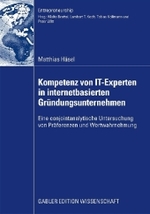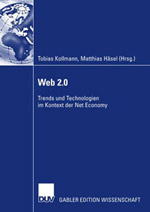Publikationsdetails
Häsel, Matthias (2009): Architectures for Rich Internet Real-time Games. In: Khosrow-Pour, M. (Ed.), Encyclopedia of Information Science and Technology, 2nd Edition, pp. 226-231, Hershey, PA: Information Science Reference.
Introduction
Many researchers regard multiplayer online games as the future of the interactive entertainment industry (Sharp & Rowe, 2006; El Rhalibi & Merabti, 2005; Brun et al., 2006). In particular, due to advances in game design and the availability of broadband Internet access to the end-user, multiplayer online games with real-time interaction have come into wide use (Aggarwal et al., 2005; Yasui et al., 2005; Claypool & Claypool, 2006). The majority of these games are made up by classic software titles that need to be installed on the players' machines (El Rhalibi & Merabti, 2005). Browser-based multiplayer games, on the contrary, can be run instantly from a web site, but have, due to technical limitations, long been round-based, strategy-focused games. However, with the ongoing evolvement of Rich Internet Application (RIA) technology (Allaire, 2002) such as Adobe Flash and Java, browser-based online game development has reached a point where also real-time games can be produced and distributed to a large audience quickly and easily. Browser-based games can be utilized in conjunction with e-business offers in a very simple way and hold a number of exciting possibilities for new online business models, new markets, and new growth (Kollmann & Häsel, 2006; Sharp & Rowe, 2006). However, as the browser is a very different operating environment and interactive experience from that of classical game software, browser-based multiplayer real-time games involve gaming architectures that are distinct from their classical counterparts. A major challenge when designing and implementing such architectures is that multiplayer online games are highly vulnerable to propagation delays resulting from redundant communication, bottlenecks, single points of failure and poor reactivity to changing network conditions (Ramakrishna et al., 2006). As latency from input of information to its output determines gameplay and fairness (Brun et al., 2006), the game architecture has to be designed in a way that it mitigates latency effects and meets the expectations of the players (Claypool & Claypool, 2006). Elaborating on the example of an online tabletop soccer game with two remote players, this article discusses two architectural models that can be applied to implement browser-based multiplayer real-time games using RIA technology.
Bezugsmöglichkeit
Das Werk kann direkt bei Information Science Reference bestellt werden.
Weitere Veröffentlichungen im Themenbereich
Häsel, Matthias (2007): Rich Internet Architectures for Browser-Based Multiplayer Real-Time Games - Design and Implementation Issues of virtual-kicker.com. In: Enokido, T./Barolli, L./Takizawa, M. (Eds.), Network-Based Information Systems: First International Conference, NBiS 2007, Regensburg, Germany, September, 2007, Proceedings. Lecture Notes in Computer Science (LNCS) 4658, pp. 157-166, Berlin/Heidelberg: Springer-Verlag.
Details »
Häsel, Matthias (2007): Entwicklung von Rich Internet-basierten Multiplayer-Echtzeitspielen - Erfahrungen einer Online-Liga im Web 2.0, in: Kollmann, T./Häsel, M. (Hrsg.), Web 2.0: Trends und Technologien im Kontext der Net Economy, S. 175-190, Wiesbaden: Deutscher Universitätsverlag.
Details »
« zurück


